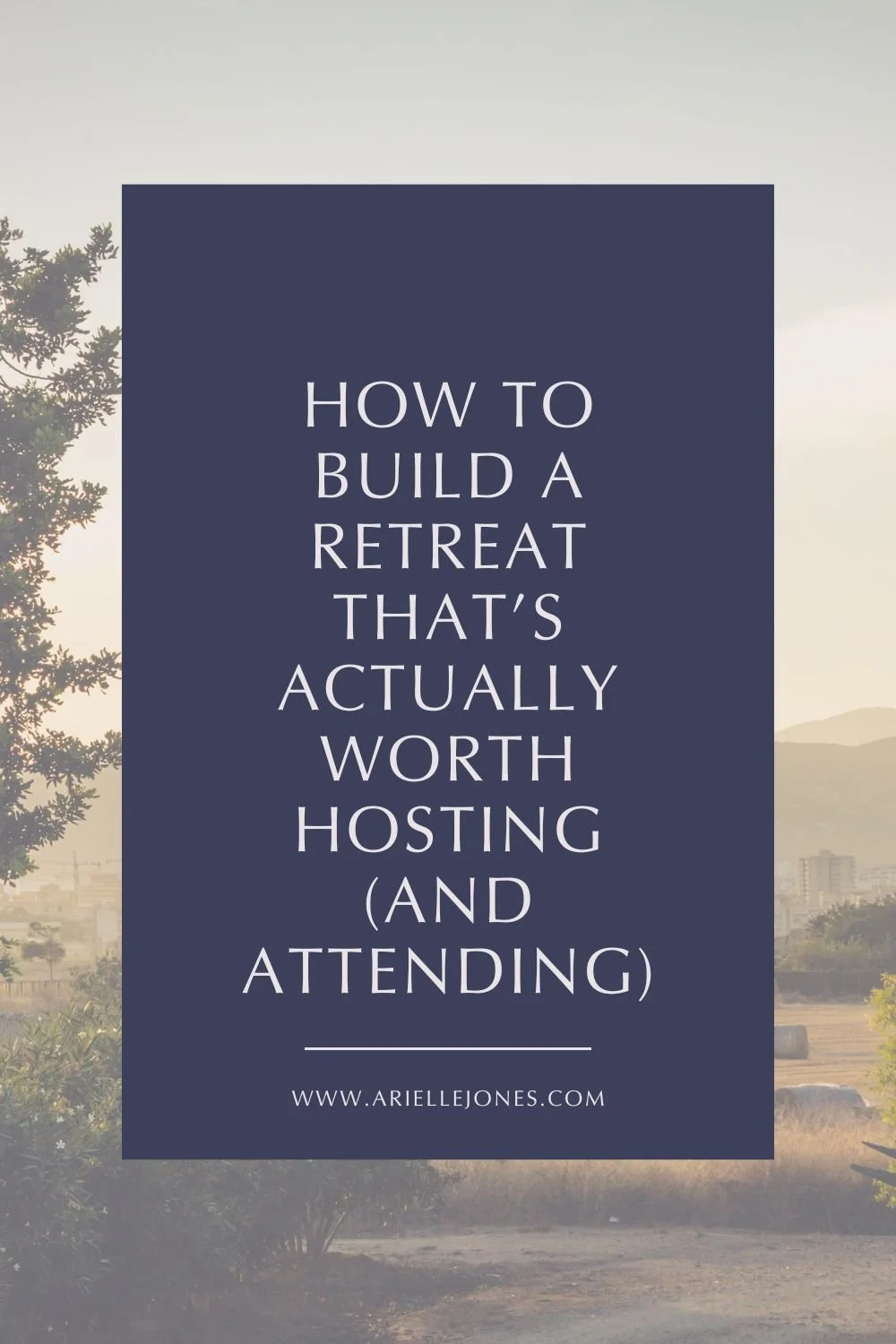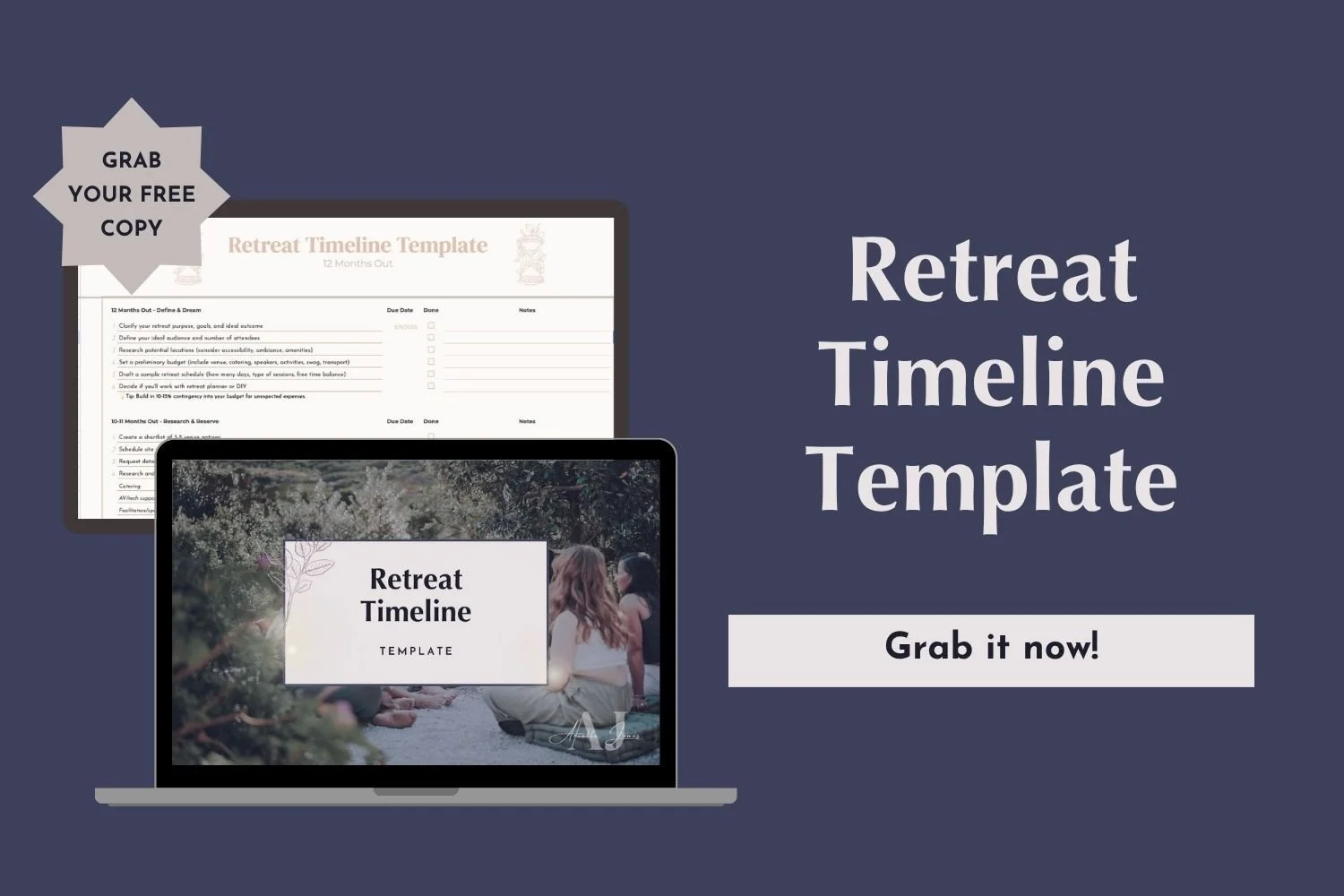How to Build a Retreat That’s Actually Worth Hosting (And Attending)
You want your retreat to feel intentional, organized, and impactful, not like something you barely held together behind the scenes.
But getting there takes more than a beautiful venue and a few curated activities. The retreats that feel seamless and meaningful? They all start with one thing: a solid foundation.
In this post, I’m walking you through the key elements every retreat needs in the early planning stages. These steps happen long before your guests arrive, but they shape everything about the experience.
Retreats That Feel Aligned Don’t Happen by Accident. Here’s Where to Begin
Prefer to watch? The full breakdown is in the video below. Otherwise, let’s dive in.
Tip #1: Know Why You’re Hosting This Retreat
Yes, this sounds obvious. But it’s one of the most common places hosts go vague.
If you’re not clear on the purpose of your retreat, it becomes difficult to build something that supports your guests and your business.
Ask yourself:
Is this retreat meant to deepen relationships with current clients or invite in new ones?
Is it part of a larger offer (like a mastermind or high-touch program)?
Is the goal educational, transformational, or a mix of both?
When you know the “why,” everything else flows: Your schedule, activities, speakers, pricing, even your location. It all becomes easier to define.
This is true whether you're planning a business, wellness, creative, or corporate retreat.
Grounding the experience in purpose is what gives it direction.
If you’re still clarifying the vision, I created a free Retreat Purpose & Goals Workbook to guide you through the process. It’s a great place to begin.
Tip #2: Be Strategic About Your Dates
Choosing your date isn’t just about what’s available on the calendar. It’s one of the most strategic decisions you’ll make.
Give yourself margin, enough time to plan, market, prep, and actually enjoy the process.
Some things to consider:
Does the timing conflict with school holidays or major events?
Is it too close to a launch or other key moment in your business?
Will it land in a high-travel season (which could raise costs)?
General timing guidelines:
Smaller retreats → plan 6 months out
Destination or larger retreats → 9–12 months
Corporate retreats → 12–18 months (yes, really)
The earlier you choose your date, the more options you have venue-wise, vendor-wise, and energetically.
If you’re working with a shorter runway, you’ll need to get clear on your priorities and move decisively from day one.
Tip #3: Map Out a High-Level Timeline
Once your date is set, it’s time to zoom out. What needs to happen between now and the retreat and when?
Start with key milestones like:
Booking your venue and vendors
Signing contracts and paying deposits
Opening registration + launching marketing
Final payment deadlines
Ordering swag and materials
Finalizing your run-of-show
Even if your first version is a rough draft, a high-level roadmap gives you clarity and reduces decision fatigue.
If you’re planning 9–12 months out, you’ll have space to move intentionally.
On a tighter timeline? Things will overlap, and that’s okay. A clear plan still makes it doable.
Need help building your timeline?
I created a Retreat Timeline Template to help you see the big picture. It’s linked in the image below, and it’s fully customizable to your timeline and team.
Bonus: Set Up Your Retreat Planning Hub
This one step will save you hours (and stress) later on: create a centralized hub for your retreat planning.
Use whatever platform works for you: Google Drive, Dropbox, or Asana. Just make sure it’s organized and easy to access.
Store things like:
Contracts and vendor quotes
Branding elements and speaker info
Guest lists and room assignments
Event schedules and to-do lists
Inspiration images or creative direction.
It doesn’t have to be fancy, but it does need to be functional.
When your systems are organized early, it’s easier to delegate and collaborate later.
Start with Structure. Everything Else Builds From There.
Retreats don’t come together because you’re passionate.
They come together because you’re prepared.
If you want your retreat to feel aligned, impactful, and fully supported behind the scenes, start with structure.
The Retreat Purpose & Goals Workbook and Retreat Timeline Template are designed to help you do just that. Together, they’ll give you the clarity to move forward without scrambling later.
Because when your retreat has a strong foundation?
Everything else, the vibe, the energy, the guest experience, falls into place.



